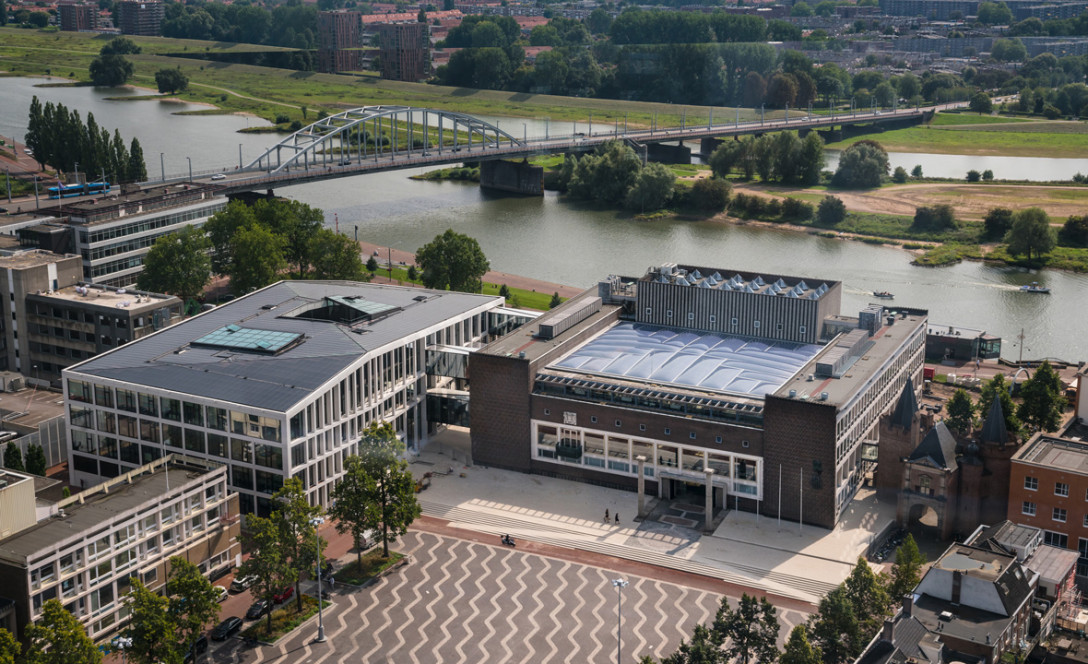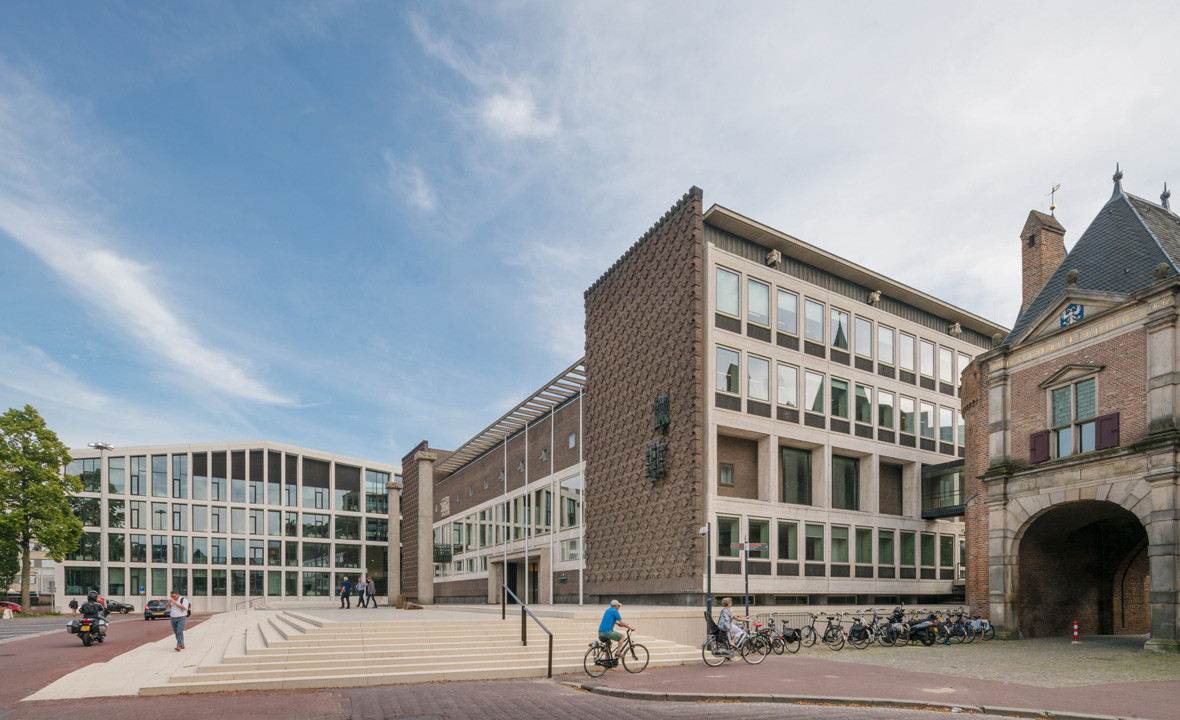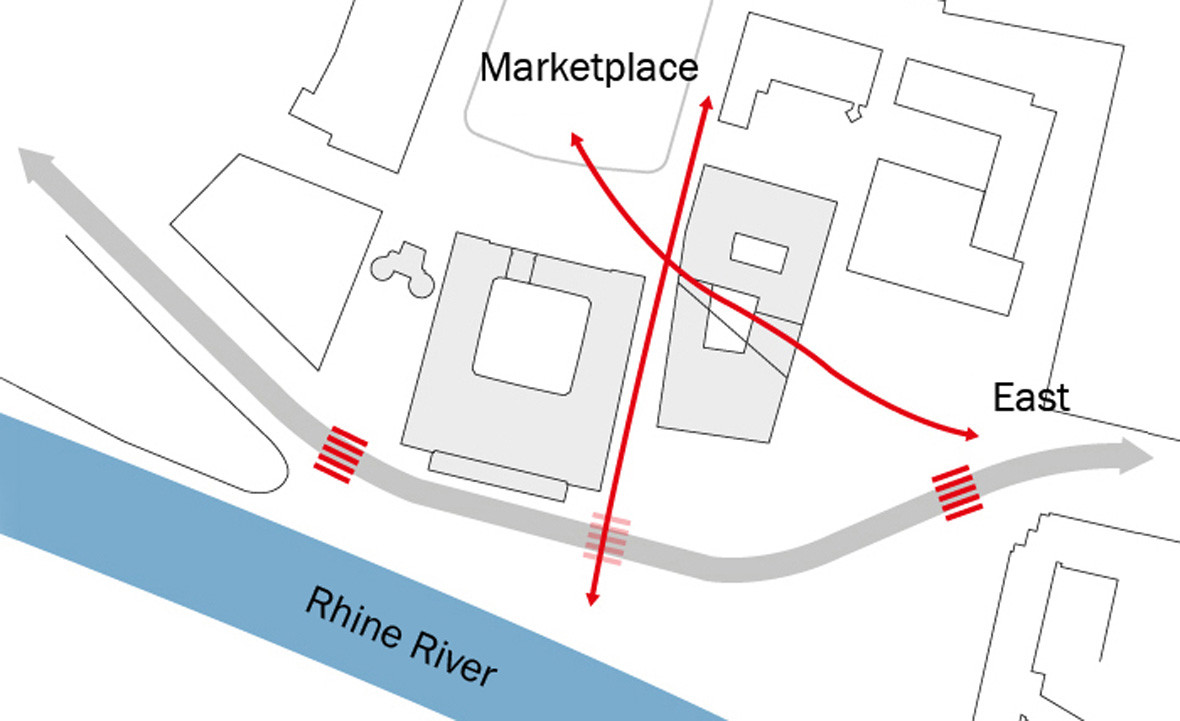


The Huis der Provincie in Arnhem (House of Province) is renovated and expanded. The Government Quarter is situated in a prominent location on the edge of Arnhem’s city centre, directly on the Rhine. The location has two distinct sides: an urban side and a landscape side. This duality serves as the starting point for the design that Karres en Brands worked on with a large team.

The Provinciehuis takes a special position within the city of Arnhem. Before World War II, it had a prominent position in the market. In the September 1944 bombings, a large part of the Arnhem city centre was destroyed. The new provinciehuis, designed by architect J. Vegter, got a different location between the market and the Rhine - the current Huis der Provincie. A sturdy and powerful structure, it is enormously rich in detail. However, the old building was no longer adequate. Due to an increase in personnel in recent decades, more and more employees were housed in adjacent office buildings. The transformation of the Huis der Provincie and demolition / construction of the adjacent Rijnstate office created a compact, new provinciehuis designed by Team V architecture.

The urban, northern side of the building is pointed toward downtown, and a green, southern side is oriented toward the landscape and the Rhine. To strengthen the area’s bond with the city of Arnhem, several public routes traverse the complex. In this way, the Government Quarter is no longer experienced as a single monolithic volume. The urban fabric is greatly improved and the connection restored between the market and the Rhine. The Government Quarter is literally returned to the pedestrian; the area is once again a liveable part of the city.


Following this concept, five new urban spaces are introduced in the public space design. A city platform / podium with gradually ascending stairs on the market side contributes to the face of the Gelders Huis and forms a new platform for urban activities. The plaza, located on the south side of the new building, is a landscape balcony overlooking the Rhine. The east-west route add two particular urban areas to the project area, including a green walking route. Finally, there is the meadow; a haven in the midst of meeting places that seeks a connection to the green space around the Battle of Arnhem memorial and the grassy slopes along the Rhine Kade.

The new building’s architecture seeks an emphatic connection with the stylistic features of the existing building. Also desired for the public space is connection within the complex. For this, an important element is a raised deck that connects the buildings with each other in an informal manner. The original upper platform of the existing building is connected to the route through the new building, and the new city terrace at the Rhine side. The autonomous and connecting character of the platform is emphasized by organizing and materializing the platform differently than the city.
| Location. | Arnhem, Netherlands |
|---|---|
| Assignment | Transformation and extension of the Home State / Urban planning and land arrangement |
| Size | 1.6 hectares / 29.000 m² GFA |
| Design | 2014 |
| Construction | 2015 – 2017 |
| Status | Realised |
| Client | Consortium iDNova |
| In collaboration with | Team V, OTH, DGMR, Bartels Ingenieursbureau, Wessels Rijssen, Visser & Smit, HOMIJ, Valstar Simonis, VolkerWessels Integraal |
| Copyright images | Jannes Linders |